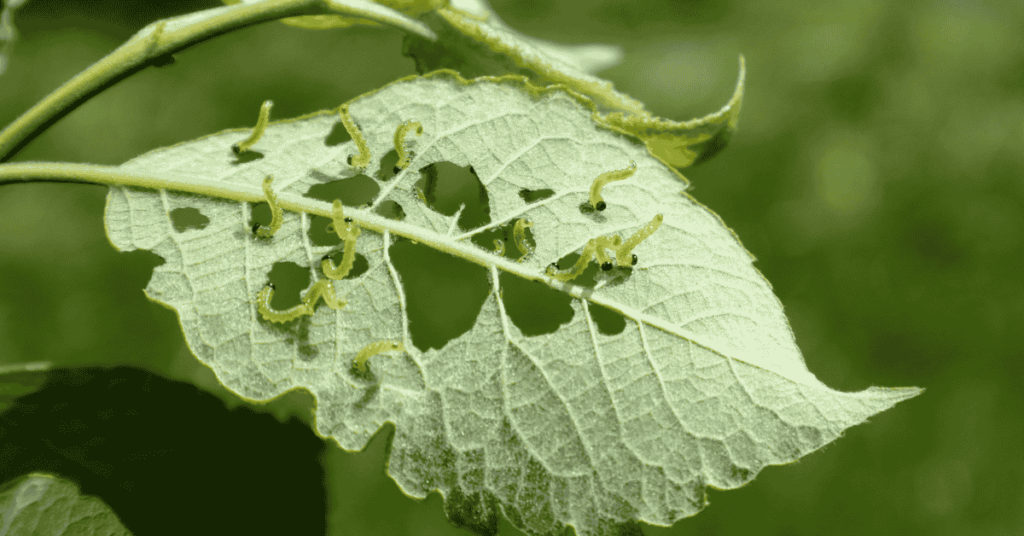Top 5 Pests Threatening Crops & How to Control Them | IPM Guide

India is one of the largest agricultural economies in the world, contributing significantly to global food production. However, pests continue to be a major challenge, causing substantial crop losses, reducing yield, and increasing farmers’ financial burdens. According to reports, pests account for 15-25% of total crop losses in India annually, making effective pest management essential for sustainable farming.
Pest infestations not only reduce productivity but also impact the quality of produce, affecting market prices. Farmers often rely on chemical pesticides, but overuse leads to pesticide resistance, environmental harm, and health hazards. The key to effective pest management lies in Integrated Pest Management (IPM)—a sustainable approach that combines biological, cultural, and chemical control methods.
The Top 5 Pests that Threaten Crops in India
1. Fall Armyworm (Spodoptera frugiperda)
- Crops Affected: Maize, Sorghum, Sugarcane
- Damage:
This invasive pest spreads rapidly, feeding on leaves, stems, and reproductive structures of plants.
In maize fields, larvae chew large holes in leaves, giving them a “ragged” appearance.
A severe infestation can lead to total crop failure if not controlled early.
How to Control It?
Biological Control:
- Introduce natural predators like Trichogramma wasps that attack armyworm eggs.
- Use Beauveria bassiana, a naturally occurring fungus that infects and kills the larvae.
Chemical Control:
- Use selective insecticides like Emamectin Benzoate and Spinosad to target larvae.
- Avoid excessive pesticide use to prevent resistance development.
Cultural Practices:
- Deep plowing after harvest to expose larvae and pupae.
- Intercropping with legumes to disrupt pest lifecycle and reduce armyworm populations.
2. Cotton Bollworm (Helicoverpa armigera)
Crops Affected: Cotton, Tomato, Chickpea, Pigeon Pea
Damage:
Bollworms bore holes in cotton bolls, causing damage to the fiber and reducing market value.
In tomatoes and pulses, the larvae feed on the developing seeds and fruits, leading to massive yield losses.
If untreated, infestations can result in 30-40% crop loss.
- How to Control It?
Biopesticides:
- Use Bacillus thuringiensis (Bt) sprays, which contain bacteria that kill bollworm larvae.
- Neem-based insecticides can also help repel young larvae.
Trap Crops:
- Marigold is an effective trap crop that attracts bollworms away from cotton fields.
Chemical Sprays:
- Indoxacarb, Chlorantraniliprole, and Emamectin Benzoate are effective pesticides when applied correctly.
3. Brown Planthopper (Nilaparvata lugens)
Crops Affected: Paddy (Rice)
Damage:
These pests suck plant sap, weakening the crop and leading to hopper burn—a condition where leaves turn yellow and dry out.
High nitrogen fertilizer use increases the risk of planthopper infestation.
A severe outbreak can wipe out entire rice fields, leading to food shortages and financial losses for farmers.
How to Control It?
Resistant Varieties:
- Use high-yielding, pest-resistant rice strains such as IR64 and Swarna-Sub1.
Organic Sprays:
- Neem oil sprays and Beauveria bassiana are effective natural insecticides.
Water Management:
- Avoid excess nitrogen-based fertilizers, which attract planthoppers.
- Maintain optimal water levels to prevent breeding conditions.
4. Whitefly (Bemisia tabaci)
Crops Affected: Cotton, Vegetables, Pulses, Oilseeds
Damage:
Whiteflies feed on plant sap, causing yellowing and wilting of leaves.
They are major carriers of plant viruses, such as Cotton Leaf Curl Virus and Tomato Yellow Leaf Curl Virus.
Infestation leads to poor crop growth and reduced yields.
- How to Control It?
Yellow Sticky Traps:
- Using yellow sticky traps helps attract and capture adult whiteflies.
Botanical Insecticides:
- Neem-based products and Beauveria bassiana fungus can help control whitefly populations.
Crop Rotation:
- Regularly changing crop patterns helps break the whitefly lifecycle.
5. Aphids (Aphidoidea)
- Crops Affected: Wheat, Mustard, Fruits, Vegetables
- Damage:
Aphids suck plant sap, leading to stunted growth and curling leaves.
They are vectors of viral diseases, reducing crop quality and yield.
Heavy infestations cause sticky honeydew deposits, which attract fungal infections.
How to Control It?
Soap Water Spray:
- A simple homemade soap-water spray helps eliminate aphids naturally.
Predator Insects:
- Ladybugs and lacewings are natural predators that feed on aphids.
Companion Planting:
- Growing mustard plants near wheat fields helps trap aphids and reduce damage.
Integrated Pest Management (IPM) Strategies
To minimize reliance on pesticides, farmers should adopt an Integrated Pest Management (IPM) approach, which includes:
Cultural Practices:
- Crop rotation, mixed cropping, and maintaining soil health.
Biological Control:
- Using beneficial insects like ladybugs, parasitic wasps, and predatory beetles.
Mechanical Control:
- Installing sticky traps, pheromone traps, and net barriers.
Chemical Control (Last Resort):
- Using targeted pesticide applications to avoid unnecessary chemical exposure.
Pests pose a significant threat to Indian agriculture, impacting food security and farmer incomes. Early identification and proper management are essential to minimizing losses.
By adopting Integrated Pest Management (IPM) techniques, farmers can protect their crops sustainably while reducing reliance on harmful chemicals.
